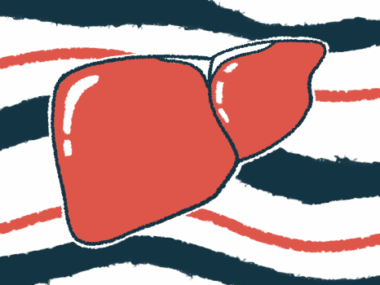Time between biliary atresia diagnostic tests, Kasai surgery varies
KPE at an early age is the strongest predictor of infant's liver survival
Written by |

Despite the established link between a younger age at standard Kasai surgery and better outcomes for infants with biliary atresia, the time between the first diagnostic tests and the surgery varies widely among medical institutions in the U.S., a study shows.
A significant difference between institutions was also seen for the odds of bilirubin clearance, a sign of surgery’s success, with the data further reinforcing a link between delayed Kasai surgery and reduced treatment success. The study’s researchers did note there’s no standardized way to confirm a biliary atresia diagnosis, with different institutions using a combination of laboratory testing, imaging scans, and liver biopsy.
“Development of an efficient, standardized, noninvasive system to confirm the diagnosis of [biliary atresia] among infants with [jaundice] should be prioritized,” the researchers wrote. The study, “Real-world Multi-institutional Data From the Midwest Pediatric Surgery Consortium (MWPSC) to Assess the Effect of Delayed Kasai Procedure on Biliary Drainage in Patients With Biliary Atresia,” was published in the Journal of Pediatric Surgery.
Biliary atresia is a serious liver disease in infants wherein the bile ducts, which transport the digestive fluid bile from the liver into the intestine, are blocked or absent. As a result, bile builds up in the liver and leaks into the bloodstream, leading to symptoms such as a yellowing of the skin and whites of the eyes, called jaundice. Over time, excess bile in the liver can cause liver damage, scarring (cirrhosis), and potentially liver failure.
Surgical intervention via Kasai portoenterostomy, or KPE, is the first-line treatment for biliary atresia and involves creating a new tube to carry bile into the intestines. When it’s successful, the surgery can help normalize bile flow and reduce liver damage. But even with successful surgery, most biliary atresia patients progress to liver failure and ultimately require a liver transplant, the researchers noted.
KPE at the earliest age is the strongest predictor of survival of the infant’s liver. Even so, uncertainties surrounding the symptoms and diagnosis can delay an early KPE, which isn’t consistently achieved in the U.S.
Variations in time between diagnosis, treatment
Given that delays in KPE persist, scientists in the U.S. investigated the variability in a biliary atresia evaluation and KPE timing at 11 U.S. children’s hospitals to identify factors associated with successful bile drainage. This outcome is typically assessed through blood levels of bilirubin — an orange-yellow pigment of bile that accumulates in biliary atresia and is thought to underlie jaundice — below 2 mg/dL.
“Identifying and addressing specific factors associated with delay in time to KPE would aid in providing timely care for all patients with BA,” the researchers wrote.
Of 161 infants diagnosed with biliary atresia (55.9% girls), most had jaundice (78.3%) and pale stools (62.1%). About one-third (37.9%) had enlarged livers and spleens. Most (92.5%) underwent KPE at a median age of 53 days, with more than half (52%) being older than 50 days. The median age at jaundice workup, or bilirubin evaluation, was 35 days for those infants who were having surgery.
For each 10-day increase in age at KPE, the odds of normalizing bilirubin at three months dropped by 18.8%, statistical analyses showed. Infants who had KPE before 50 days of age were 2.6 times more likely to clear bilirubin at 3 months of age than those older than 50 days at their surgery.
Differences among medical institutions
When institutions were compared, there was no significant difference in the age at workup initiation, specialist referral, surgical referral, and KPE. However, the median time between the first bilirubin test and the age at KPE varied significantly, from 3.5 to 32 days.
“We found significant variability in the time to initiation of jaundice workup and ultimate KPE, without a clear underlying cause,” the researchers wrote. “This delay in performance of KPE was associated with reduced rates of bilirubin clearance for those undergoing KPE past 50 days of age.”
Of the 130 infants who had a follow-up three months after KPE, half achieved bilirubin normalization. After adjusting for sex, ethnicity, birth weight, age at KPE, and insurance status, the odds of normalizing bilirubin levels at three months varied significantly across institutions, ranging from 4% to 89%. The number of KPEs performed at each institution didn’t affect these results.
To better understand the factors that contributed to this variability, the researchers divided the lead-up time to KPE into two phases, pre-hospital and hospital.
In the pre-hospital phase, or the time between recognizing jaundice caused by bile buildup by community clinicians/caregivers and a referral to a specialist, one-quarter of the patients had workup initiated after 62.5 days, well after the definition of an early KPE. While diagnostic delays in this phase were not the focus, the researchers noted that other studies suggest barriers to biliary atresia detection include neonatal variability in bilirubin levels and stool colors.
Regarding the hospital phase, the time from the specialist referral to KPE, the researchers noted that there’s no standardized way to confirm a biliary atresia diagnosis, with different centers using combinations of laboratory tests, imaging scans, and liver biopsies.
“Both the pre-hospital phase and hospital phase of BA evaluation contribute to delay in KPE,” they wrote. “Priority should be given toward implementing a screening system to identify infants with [high bilirubin] and to developing an efficient and standardized pathway to confirm a diagnosis of [biliary atresia].”






